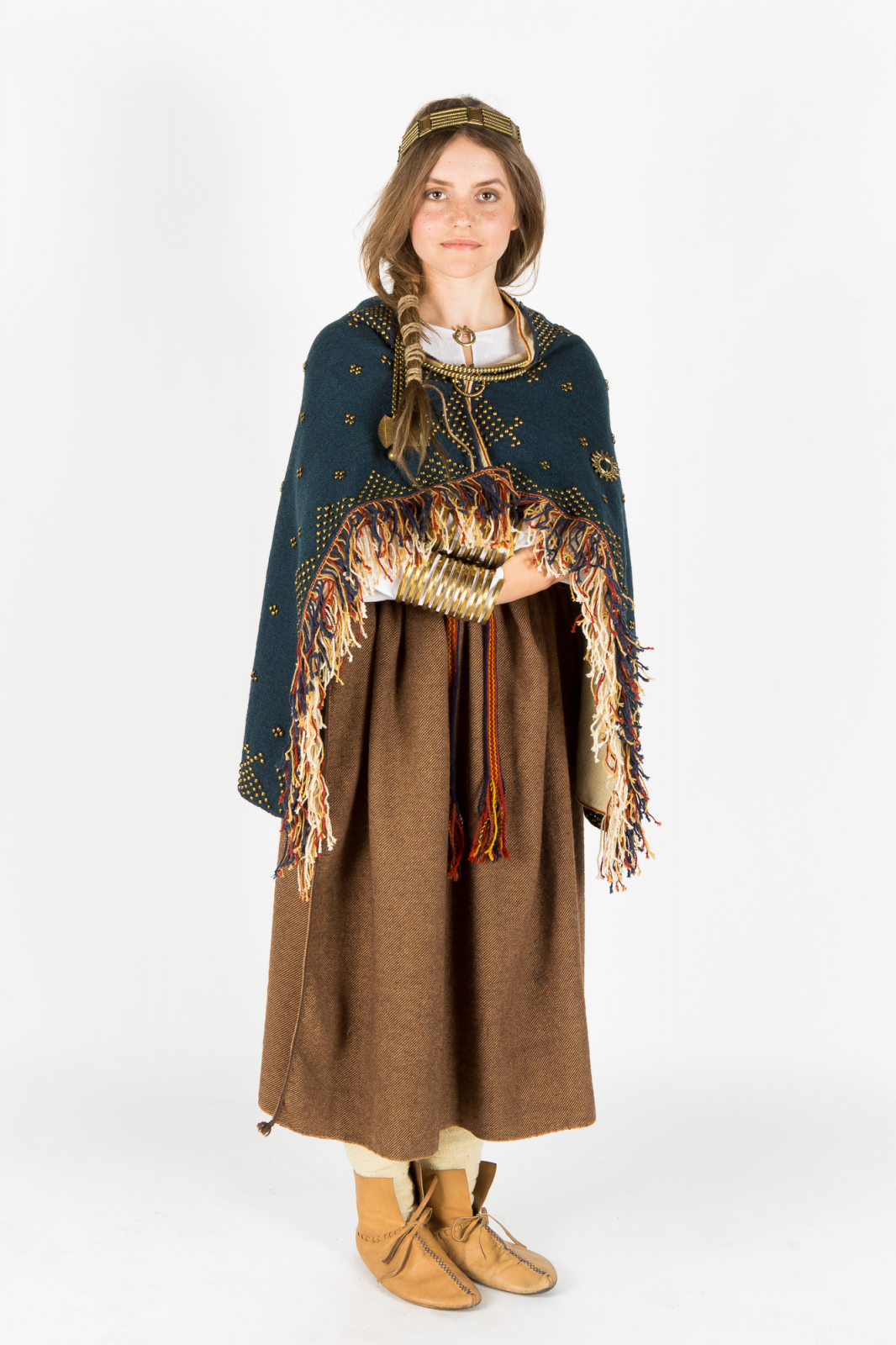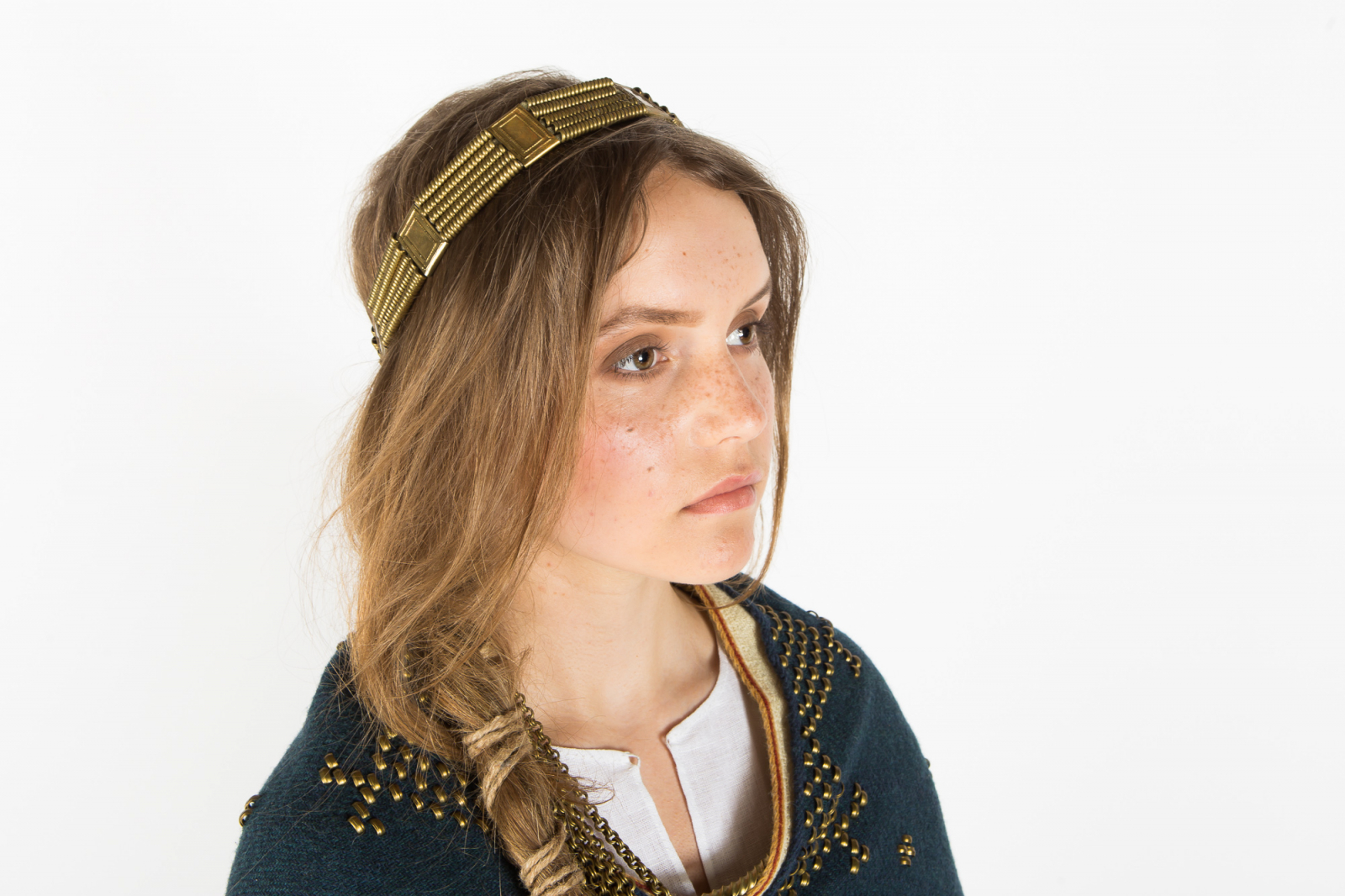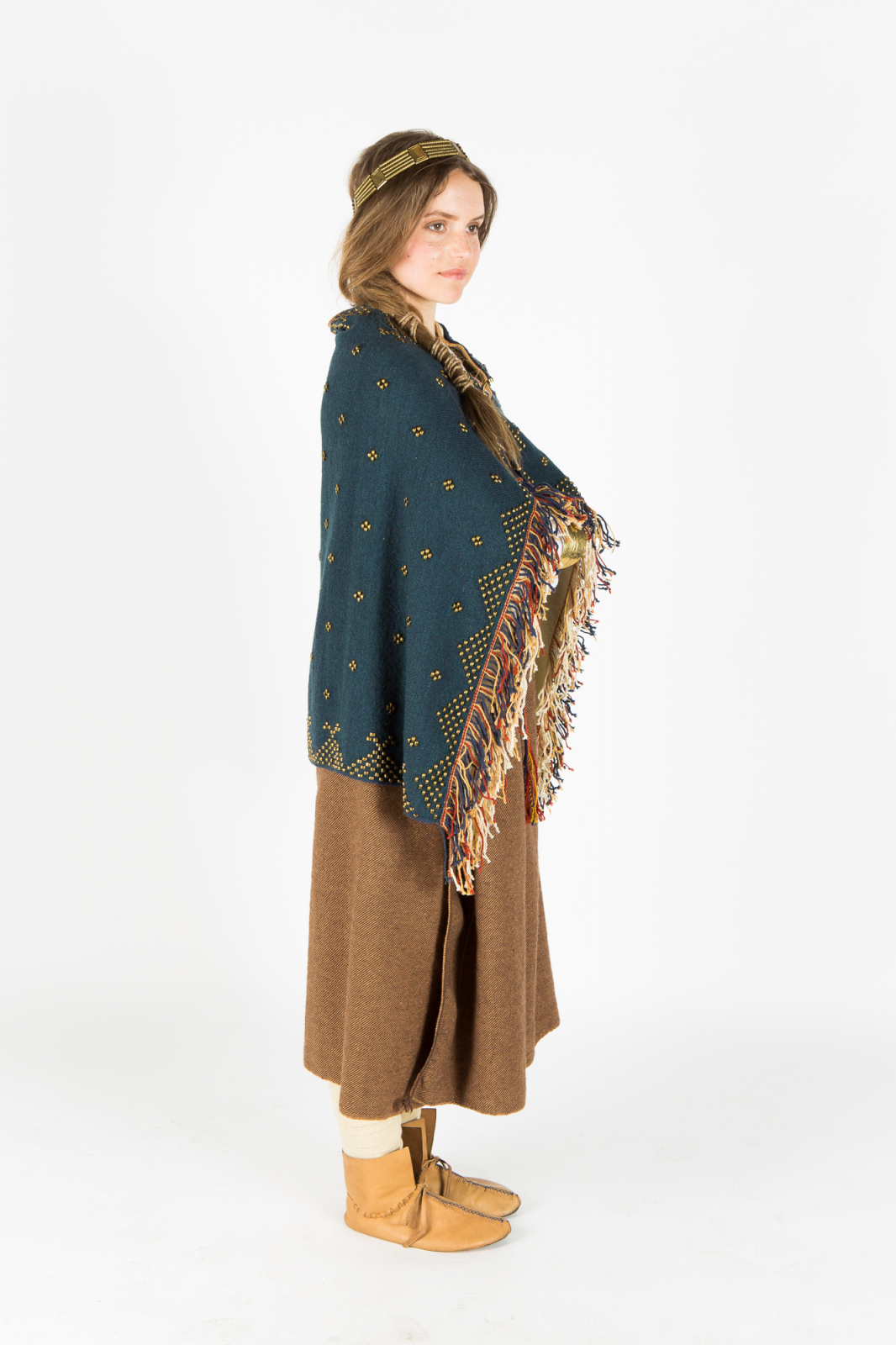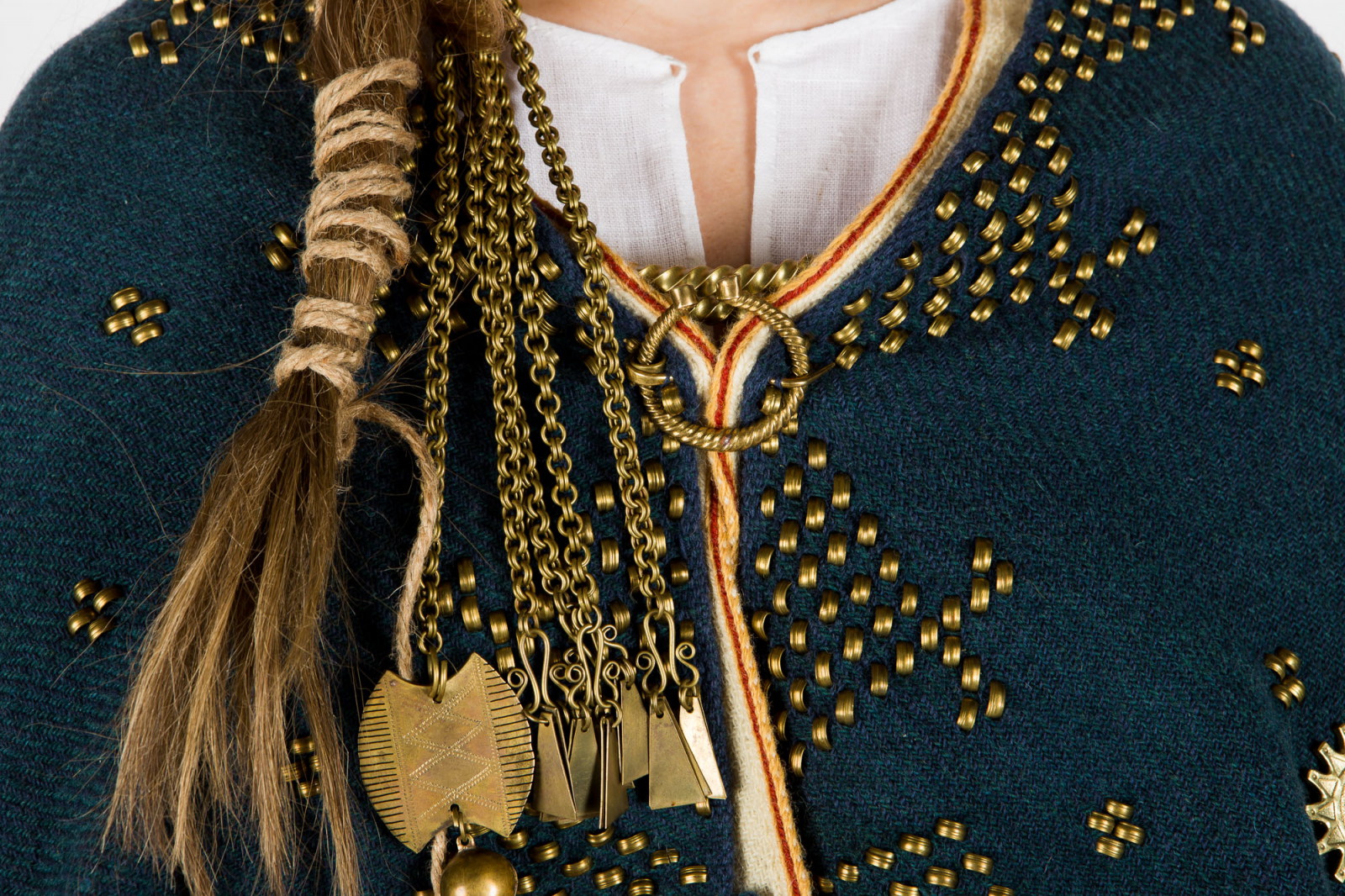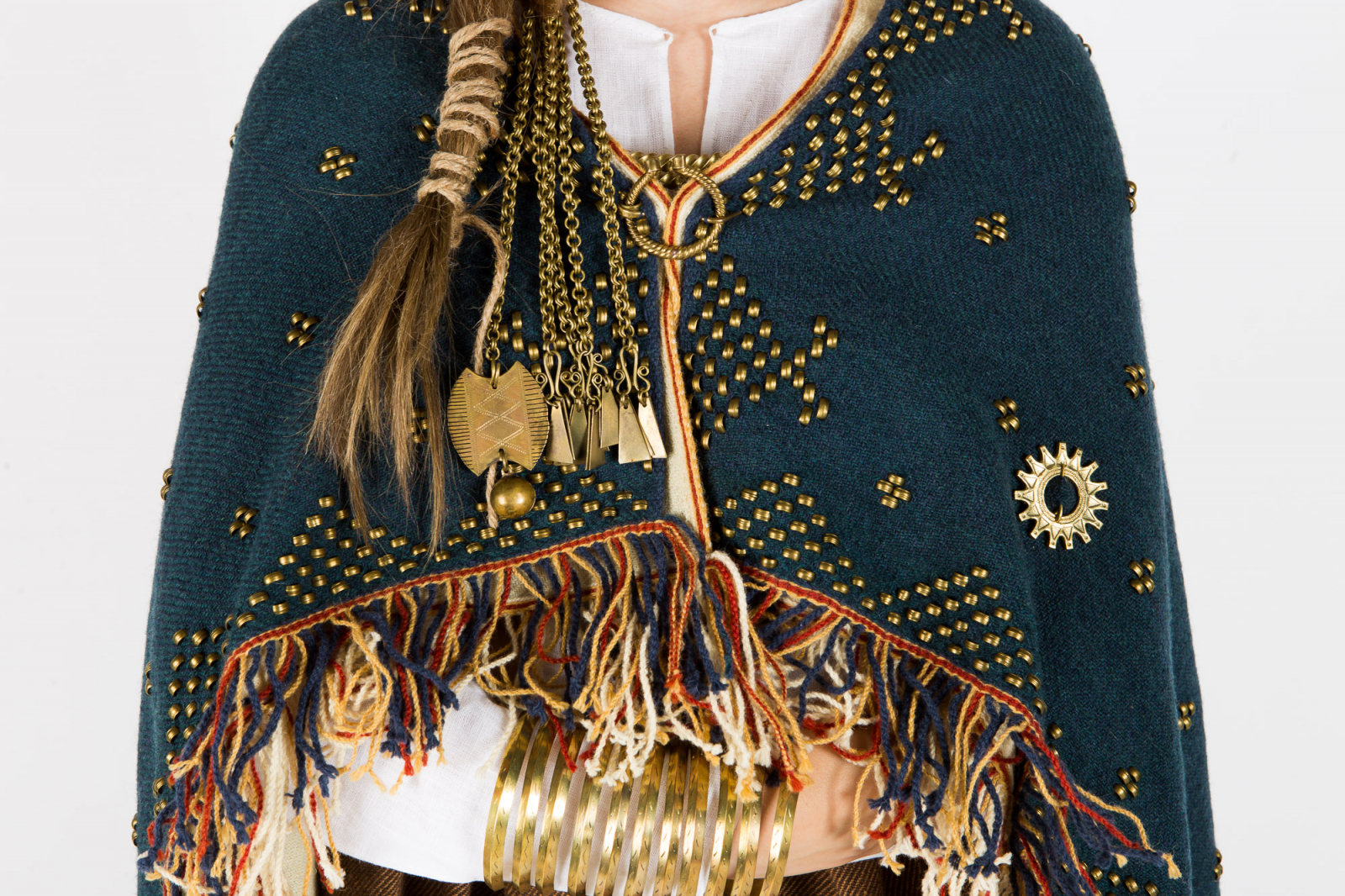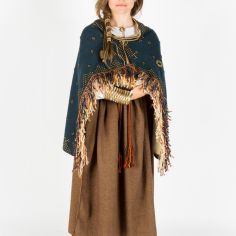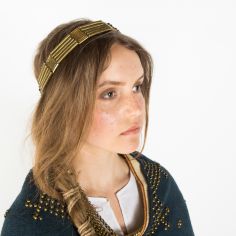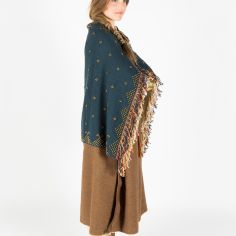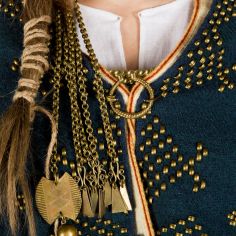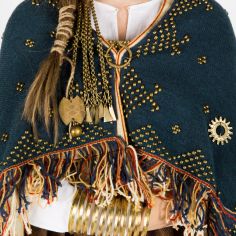Reconstruction of the 12th century Selonian woman's costume
Brief information
Selonian women’s festive clothing and adornments resembled Latgallian costumes. The Selonian women's shawls were richly decorated by interwoven bronze ornaments, often covering the entire length of the cloth. Along with these decorated shawls, simpler shoulder blankets made of plain wool cloth were used- embellished only by colorful threads woven along the garment's edge for decoration.
In place of traditional pins, woolen garments could be pinned together using "rotadatas"- these were pins without a metal facing, resembling the clasp usually found behind the metal or adornment of a pin. Jewelry resembling beaded garlands were used as necklaces, as well as neck-rings twisted or woven with dangling embellishments. Hollow bracelets with beast-head and spiralbracelets were as favorite.
History and Origin
Archaeological costumes are garments that have been reconstructed based on materials found in excavations – from fragments of cloth, decorations and adornment. Archaeological excavations unearthing evidence dating back to the 16th century, give us an understanding of what local populations – the Curonians, Semigallians, Selonians, Latgallians, as well as Livs and Vends, wore.
The excavated materials have been preserved from the long standing tradition of dressing for the journey into the 'afterlife' whereby our Ancestors dressed in their best – rich, festive and adorned clothing. The oldest materials from which we are able to reconstruct archeological costumes, date back to the 7th century. In the centuries following, it appears each ethnic group developed its own distinct traditions for costume making. Over time newer traditions replaced the material culture of those ancient people – however, these newer traditions bridged traditional materials with the latest and more modern trends of that time. This eventually led to the 19th century Latvian traditional national costume that we all know today. This costume looks different, not only in its appearance/style, but its technical composition – when compared to its predecessors.
Archaeological costumes are mostly dark blue in color and are characterized by the use of metal decorations, the style of which varies between each tribe. Part of the ancient tradition of costume-making survived throughout the ages, so that despite changes along the way, there has remained an unaltered form reflected through all costumes.
